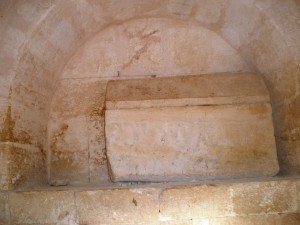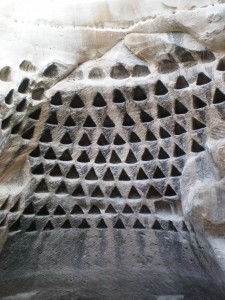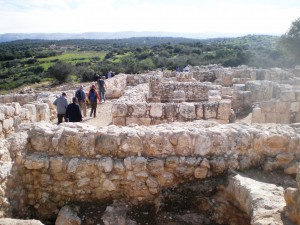The seven week period that extends from Pesach (Passover) to Shavuot (Pentecost) involves a mixture of introspection and joy. We start by remembering our slavery in Egypt and end by rejoicing in our redemption when we celebrate the day on which we received the Torah. In the interim, we commemorate Yom HaShoah (Holocaust Memorial Day) and Yom HaZikaron (Israel’s Day of Remembrance for its fallen soldiers and victims of terror attacks) and we celebrate Independence Day. Whilst we count the Omer, the days between our exodus from Egypt until the time we received the Torah on Mount Sinai, most of this period is a time of mourning. The reason given is that during these weeks 24,000 of the students of Rabbi Akiva were killed. What happened to those students that they died? Some say they were wiped out by a plague which miraculously stopped on the 33rd day of the Omer, whilst others attribute their death to the Romans who killed them during the course of the Bar Kochba Revolt (132-135 CE/AD).
The Bar Kochba Revolt broke out around 60 years after the Great Revolt, which ended in the Roman destruction of Jerusalem and the Temple. The new rebellion was caused by a Roman desire to stamp out Judaism entirely. Circumcision was forbidden, public torah readings were not allowed, and the spiritual leaders of the generation were hounded and eventually put to death.
One of the main differences in the fighting tactics of the two rebellions was that during the Great Revolt the Jews fought the Romans from fortified positions such as Jerusalem or Masada. To the detriment of the Jews the Romans had enough manpower to counter this approach. During the Bar Kochba Revolt the Jewish population adopted a different strategy, this time they decided to hide their civilian population underground. When necessary, extra fighters were sent as reinforcements. A number of these underground tunnels still exist and are a lot of fun for the more agile amongst us to explore.
If you travel south along road number 38 driving from the area of Bet Shemesh towards Bet Guvrin, near the turn off to Givat Yeshayahu is the entrance to Adullam Park. Within the park are the remains of three Jewish villages from that time period. The first one you come to is Hirbet Midras, or the Midras Ruin. You can follow a well marked trail around the site and your first stop will be a cave with a network of tunnels through which you can still crawl. If you don’t mind slithering along on all fours and sometimes on your stomach, this circular adventure is for you, it takes about twenty minutes and you should take a torch (flashlight) with you as it is dark. For the less adventurous, you can wait outside the cave entrance for the intrepid explorers to return.
 Other highlights in the site are a five metre high pyramid which is the only one of its kind in the entire country. It probably served as some kind of mausoleum. In another part of the village there are also some underground burial caves and ossuaries.In the time of the Second Temple, burial customs were such that when somebody died their body would be laid out on a shelf in a cave which would be sealed with a heavy stone. A few months later, after the flesh had decayed the bones would be transferred to a special bone box, whose size was determined by the femur, the longest bone in the human body. Several of these boxes can still be seen in the recesses of the burial cave.
Other highlights in the site are a five metre high pyramid which is the only one of its kind in the entire country. It probably served as some kind of mausoleum. In another part of the village there are also some underground burial caves and ossuaries.In the time of the Second Temple, burial customs were such that when somebody died their body would be laid out on a shelf in a cave which would be sealed with a heavy stone. A few months later, after the flesh had decayed the bones would be transferred to a special bone box, whose size was determined by the femur, the longest bone in the human body. Several of these boxes can still be seen in the recesses of the burial cave.
 Another very impressive cave is the columbarium, or pigeon coop. The name comes from the Greek word “columba” which means pigeon. Hundreds of carved niches in the rock attest to the function of this area. Pigeons were kept for a variety of reasons; as well as being used for sacrifices, their dung was used as a firelighter and fertilizer and they may also have been used to deliver messages, or possibly as a source of food.
Another very impressive cave is the columbarium, or pigeon coop. The name comes from the Greek word “columba” which means pigeon. Hundreds of carved niches in the rock attest to the function of this area. Pigeons were kept for a variety of reasons; as well as being used for sacrifices, their dung was used as a firelighter and fertilizer and they may also have been used to deliver messages, or possibly as a source of food.
A few kilometers further into the park you come to the next village of Hirbet Itri. The name comes from a pottery shard found on the site with the name “Itri” on it. It could correspond to a village mentioned by the Jewish historian Josephus in “The Jewish War”. He accompanied the Romans around the country and wrote a detailed description of where they went and the battles they fought. This village is believed to have been in existence from the time the Jews returned from Babylon until the Great Revolt when it was destroyed and its inhabitants taken by the Romans as slaves. It was immediately rebuilt on a smaller scale by the survivors, and coins and lamps from the period of the Hasmoneans have been found there.
You can plainly see the living quarters of the community, built with the outer walls of the houses serving as a defensive wall to protect the village. Although they are all one level today it would seem that the houses were originally two storey dwellings. Tunnel systems from the Bar Kochba rebellion have been found underneath these houses.
Several mikvaot (pools for ritual immersion) and a large public building have also been uncovered. Archeologists suggest that the large building may well have been used as a synagogue as it is very central, faces towards Jerusalem and is built over several mikvaot. It may be one of the very few synagogues still in existence from this interim period and it provides an important architectural link. We have remains of synagogues such as those found in Gamla, Masada or Herodion from immediately after the destruction of the Second Temple, and then only from the second and third centuries such as those in Sussiya and Maon and others found in the Hebron Hills. This building’s significance stems from the fact that it spans the years between the two.
A little beyond the residential quarter a well preserved wine press has been discovered. Many presses have been found in these hills which gives us some idea of what agricultural life must have been like in Second Temple period times. The altitude, climate and soil conditions make it an ideal area for growing grapes. It is therefore unsurprising that there is a resurgence of this ancient industry in the area and there are tens of wineries dotted around the vicinity today. If you would like to visit some of them please contact me as I am organizing a series of wine tours to the region.
The third village, Hirbet Burgin is still a few kilometers deeper into the park, but they are all well signposted on low wooden signs. Some suggest that this was the ancient Kfar Bish mentioned by Josephus, as surrendering to the Fifth Roman Legion, possibly as a result of seeing what happened to neighbouring Itri. It takes its present name from the Arab village Umm el Burj, which existed until the 19th century when it was abandoned, for reasons we do not know. Bar Kochba crawling tunnels, ancient burial caves, Byzantine dwellings, a mosaic, a wine press and a wonderful hilltop view are all features which are part of the Burgin trail …and I haven’t even mentioned the wild flowers, the sheep and the stunning pastoral scenery which makes you understand why these places are as popular today as they were in days of yore.
…and I haven’t even mentioned the wild flowers, the sheep and the stunning pastoral scenery which makes you understand why these places are as popular today as they were in days of yore.
For those of you who enjoyed my very first blog describing the annual rite welcoming the swifts back to the Western Wall, you are cordially invited to this year’s event on April 24th at 18.30. The ceremony will be held under the aegis of the Green and Accessible Pilgrimage Symposium, slated to take place in Jerusalem from 21-26 April. For more information check it out on www.greenpilgrimjerusalem.org
I am delighted to tell you about two exciting tours to take place in May. The first one on Friday May 3rd will be a wine tour to the area described in my blog above.
The second tour on Wednesday May 8th is a special morning Jerusalem Day tour designed to introduce you to Jerusalemites you would not usually have a chance to come across. You will have an opportunity to learn about their customs and sample some of their traditional food.
If you are interested in either of these tours please send me an email and I will be happy to give you the details.
